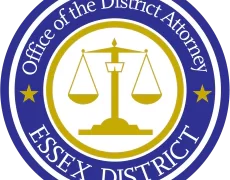Purpose
- August 31 marks International Overdose Awareness Day (IOAD), a global campaign to end overdose.
- Remember loved ones who have died from drug overdose and acknowledge the grief of those left behind.
- Encourage support and recovery for everyone impacted by substance use and overdose.
- End overdose by sharing prevention strategies.

Overdose awareness is important
Hashtags: #TogetherWeCan #IOAD2024 #EndOverdose
International Overdose Awareness Day is the world’s largest annual campaign to end overdose.
The goals of International Overdose Awareness Day are to:
- Provide an opportunity for people to publicly mourn loved ones.
- Tell people who use drugs and people in recovery that they are valued.
- Inform people around the world about the risk of drug overdose.
- Provide basic information on the range of support services that are available.
- Prevent and reduce drug-related harms by supporting evidence-based practice.
This IOAD, we affirm that when we work together to heal and empower communities, we can save lives and end overdose.
Partner with us
Join us as an IOAD partner by using your voice and platforms to spread the message of ending overdose. This partner toolkit provides free resources for you to use, including key IOAD messages, social media content, and more. In addition to this toolkit, a campaign resources overview provides a list of materials available for download and print.
Examples of how to get involved include:
- Posting IOAD messages using the hashtags #TogetherWeCan, #IOAD2024, and #EndOverdose on social media.
- Sharing IOAD digital content, web features, and materials online.
- Using the sample articles to share IOAD information with communities and healthcare providers in newsletters, emails, and other partner communications.
- Downloading free educational materials and participating in interactive trainings for patients and health care providers.
- Educating communities and healthcare providers at meetings, health fairs, conferences, and other events.
Who should use this toolkit
General audiences and media
This year for IOAD, CDC’s Division of Overdose Prevention in the National Center for Injury Prevention and Control released a new Morbidity and Mortality Weekly Report (MMWR). Using data from CDC’s State Unintentional Drug Overdose Reporting System (SUDORS), investigators examined characteristics of individuals who died of a drug overdose in 2022 and had any reported mental health disorder (MHD) in 44 jurisdictions.
In the analysis, more than 1 in 5 people who died of a drug overdose had a reported non-substance-related MHD. The most common disorders were depressive (13%) and anxiety (9%). Approximately one quarter of people who died with a non-substance-related MHD had at least one recent potential opportunity for intervention (e.g., emergency department visit).
Drug overdose deaths remain a public health crisis in the United States; 2022 marked the second consecutive year with over 100,000 drug overdose deaths in the U.S. People with mental health conditions are at increased risk for overdose. Substance use disorders (SUDs) and other MHDs frequently occur together, which also increases the risk of overdose. Decreasing stigma and other barriers to seeking and receiving care for all MHDs, including SUDs, could save lives and improve mental health. To help prevent fatal overdoses, health care and public health professionals can build upon efforts to identify and treat patients who have SUDs and other MHDs, such as integrated screening and treatment, and strengthened local harm reduction services, including naloxone distribution.
Read the full report.
How to recognize an overdose
Recognizing an overdose can be difficult. If you aren’t sure, it is best to treat the situation like an overdose—you could save a life. Administer naloxone, if it’s available, and call 911 immediately. Do not leave the person alone. Signs of an overdose may include:
- Small, constricted “pinpoint pupils”
- Falling asleep or loss of consciousness
- Slow, weak, or no breathing
- Choking or gurgling sounds
- Limp body
- Cold and/or clammy skin
- Discolored skin (especially in lips and nails)
Lifesaving naloxone
Naloxone can reverse an overdose from opioids, including heroin, illegally made fentanyl and fentanyl analogs, and prescription opioid medications. Often given as a nasal spray, naloxone is safe and easy to use.
Anyone can carry naloxone, give it to someone experiencing an overdose, and potentially save a life.
Reminder
Healthcare professionals
CDC’s naloxone resources for healthcare professionals are designed to provide an overview of naloxone and provide strategies that can be implemented in your practice.
Studies show that naloxone may not always be offered when risk factors are present, such as taking higher doses of opioids, prescriptions for benzodiazepines in addition to opioids, or history of overdose.
Clinicians can:
- Educate patients and their caregivers on factors that increase the risk for overdose.
- Raise awareness about the benefits and availability of naloxone.
- Encourage patients who are at risk and their caregivers to carry naloxone.
- Explain how and when to administer naloxone.
- Highlight the importance of follow-up care for overdose.
CDC created a suite of naloxone materials and tools to support your efforts to discuss naloxone with patients. These tools can help clinicians inform patients, families, and/or caregivers about the value of naloxone in a non-stigmatizing manner.
- Factsheets and Conversation Starters Information on naloxone for a variety of audiences ranging from clinicians to patients.
- Naloxone Training Includes modules that are eligible for free continuing education and interactive patient cases.
- An Addiction Medicine Toolkit is also available to support clinicians who are working with their patients to treat or manage substance use disorder or opioid use disorder.
CDC released the 2022 CDC Clinical Practice Guideline for Prescribing Opioids for Pain. CDC developed resources and trainings for healthcare professionals to assist with implementing the guidance in their practices. We continuously develop materials so please check back periodically to see what is new.





